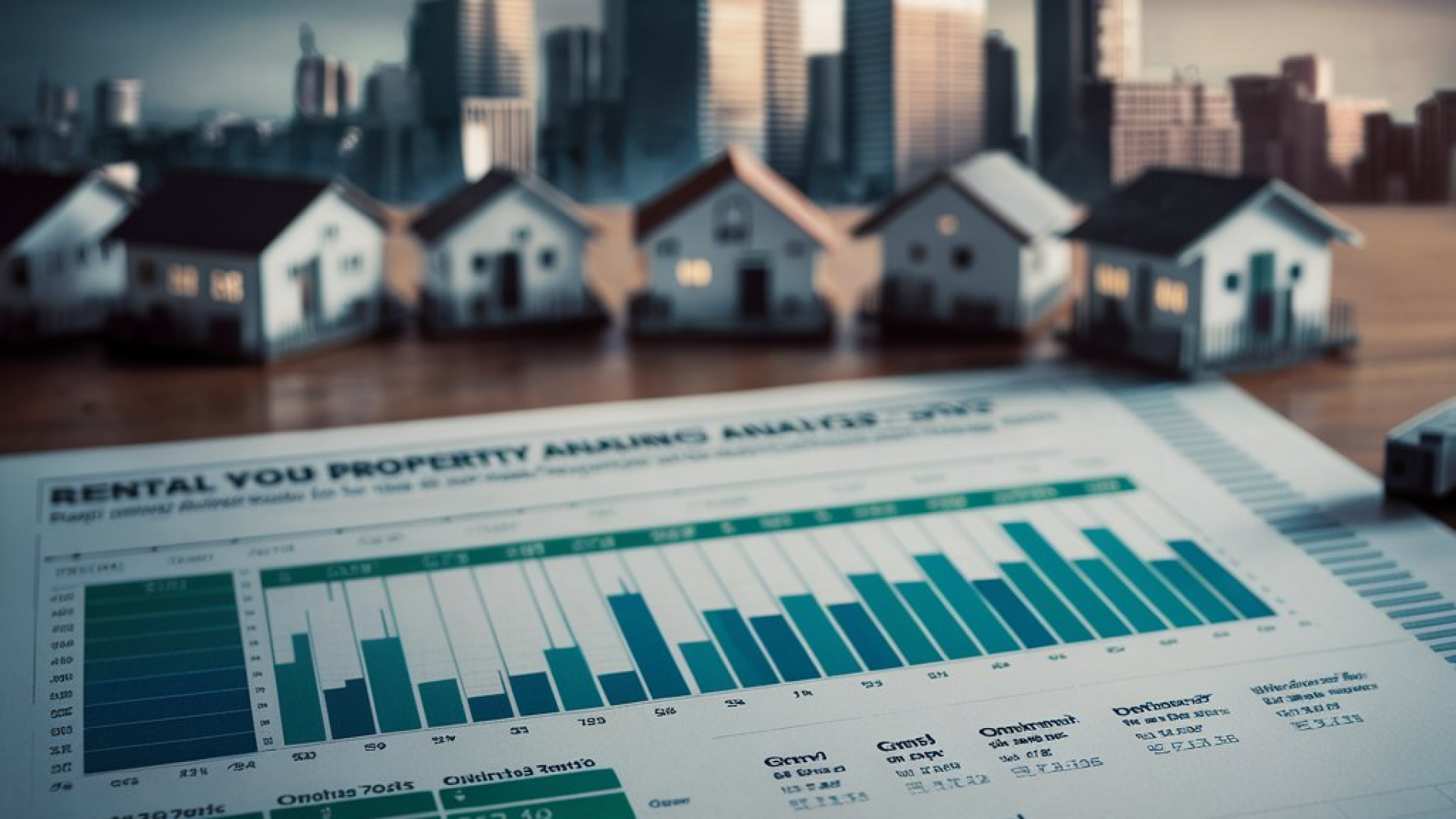Analyzing rental property returns involve calculating ROI, cap rate, and other metrics to assess profitability and make informed investment decisions. Investors should closely consider factors such as gross rental yield, capitalization rate, and net operating income to evaluate the potential returns of a rental property.
Investing in real estate can be a lucrative venture, but understanding the key metrics of rental property returns is essential to make informed decisions and maximize profit potential. By calculating important metrics like return on investment (ROI), cap rate, and rental yield, investors can effectively gauge the potential profitability of a rental property.
This comprehensive guide will explore the essential metrics that every real estate investor should know to evaluate a property and make informed investment choices. Understanding these crucial metrics is fundamental to making sound investment decisions in the real estate market and maximizing returns.
Understanding Roi
Calculation Method
ROI on a rental property is calculated by subtracting the annual operating costs from the annual rental income and dividing the total by the mortgage value.
Significance In Real Estate Investment
ROI, also known as the return on investment, is a crucial metric for real estate investors as it represents the expected profits from a rental property as a percentage.
:max_bytes(150000):strip_icc()/Capital_Investment_Analysis_Final-ea0037783d73464d93a6abb226dfdac8.png)
Credit: www.investopedia.com
Exploring Cap Rate
As an investor, understanding and analyzing rental property returns is crucial for making informed decisions. One essential aspect of this analysis is exploring the cap rate, a fundamental metric that can guide investors in evaluating the potential return on their real estate investment.
Definition And Calculation
The cap rate, short for capitalization rate, is a metric used to assess the potential return on a rental property. It is calculated by dividing the property’s net operating income (NOI) by its current market value.
Cap Rate Vs. Roi
While the cap rate focuses on the property’s potential return based on its current value and income, the return on investment (ROI) encompasses the overall profits generated from the rental property as a percentage of the initial investment. It provides a comprehensive view of the investment’s financial performance, taking into account factors such as property appreciation, mortgage value, and operating costs.
Assessing Rental Yield
Assessing rental yield is crucial when analyzing rental property returns. Rental yield measures the return on investment based on a property’s rental income, and it can be calculated as either gross rental yield or net rental yield.
One of the essential metrics that every real estate investor should be familiar with when analyzing rental property returns is rental yield. Rental yield is a measure of the return on investment based on the property’s rental income. It helps investors assess the profitability and potential cash flow of a rental property.
Types Of Rental Yield
There are two types of rental yield that investors commonly use:
- Gross Rental Yield: Gross rental yield is calculated by dividing the annual rental income by the property’s purchase price or current market value and multiplying it by 100. This metric provides a straightforward way to assess the potential income generation of a property before considering any expenses.
- Net Rental Yield: Net rental yield takes into account the property’s operating expenses, such as maintenance costs, property management fees, property taxes, and insurance. It is calculated by subtracting the annual operating expenses from the annual rental income, dividing the result by the property’s purchase price or current market value, and multiplying it by 100. Net rental yield provides a more accurate representation of the actual return on investment after considering all expenses.
Application In Property Evaluation
Rental yield is a valuable metric in property evaluation as it helps investors compare the potential returns of different properties and make informed investment decisions. Here are a few ways rental yield can be applied:
- Comparative Analysis: By calculating the rental yield of multiple properties, investors can compare their profitability and choose the most promising investment option.
- Benchmarking: Rental yield serves as a benchmark for evaluating the performance of a rental property over time. Investors can track changes in rental yield to assess the property’s growth and identify any areas for improvement.
- Location Assessment: Different locations may offer varying rental yields due to factors such as demand, market conditions, and rental market trends. Analyzing rental yield can help investors identify areas with higher potential returns.
Overall, rental yield is a crucial metric for investors to understand when evaluating rental properties. It provides insights into the potential cash flow and profitability of an investment, allowing investors to make more informed decisions and maximize their returns.
:max_bytes(150000):strip_icc()/Roi-5c4a640a34204da285b4ef1c98970be0.png)
Credit: www.investopedia.com
Analyzing Cash Flow
When analyzing rental property returns, cash flow plays a pivotal role in determining the profitability of an investment property.
Definition
Cash flow is the net income generated by a rental property after deducting all expenses, such as mortgage payments, property taxes, insurance, and maintenance costs.
Importance
Cash flow is crucial for investors as it indicates the actual money they receive from the property each month, helping them assess the property’s financial health and sustainability.
Factors Influencing Cash Flow
- Rental Income: Higher rents lead to increased cash flow.
- Operating Expenses: Lower expenses result in higher cash flow.
- Vacancy Rate: A lower vacancy rate enhances cash flow.
- Market Trends: Market fluctuations impact rental income and expenses, affecting cash flow.
- Financing Terms: Mortgage interest rates and repayment terms influence cash flow.
Evaluating Price-to-rent Ratio
When evaluating a potential rental property investment, the price-to-rent ratio is a key metric to consider. This ratio helps investors assess the affordability and potential returns of a property by comparing the purchase price to the potential rental income.
Purpose And Calculation
The purpose of the price-to-rent ratio is to determine whether buying a property or renting it out would be more financially favorable. This metric is calculated by dividing the property’s purchase price by its estimated annual rental income.
Interpretation In Property Valuation
The interpretation of the price-to-rent ratio in property valuation depends on the resulting value. A lower ratio typically indicates that buying the property may be more financially advantageous, while a higher ratio suggests that renting out the property could be a better option.
Comparing Gross Rental Yield And Net Rental Yield
Rental property investors often analyze the performance of their investments through metrics like Gross Rental Yield and Net Rental Yield. These two metrics offer valuable insights into the profitability of a rental property.
Calculation Differences
Gross Rental Yield: Calculated by dividing the annual rental income by the property’s total purchase price and expressed as a percentage.
Net Rental Yield: Determined by subtracting all expenses, such as property taxes, maintenance costs, and property management fees, from the annual rental income. The result is divided by the property’s purchase price to get the net yield percentage.
Usage In Investment Decision-making
- Gross Rental Yield is useful for quickly assessing the potential return on investment of a property without considering expenses.
- Net Rental Yield, on the other hand, provides a more accurate picture of the property’s profitability by accounting for all expenses.

Credit: butterflymx.com
Frequently Asked Questions
What Is The 2% Rule For Investment Property?
The 2% rule for investment property states that the monthly rental income should be at least 2% of the purchase price. This helps determine whether the property will provide a good return on investment.
How To Analyze The Return On A Rental Property?
To analyze the return on a rental property, calculate ROI by subtracting operating costs from rental income and dividing by the mortgage value. You can also assess profitability using the cap rate, based on the property’s net operating income compared to its market value.
What Is The 50% Rule In Real Estate?
The 50% rule in real estate states that half of rental income will go towards expenses.
How Do You Analyze Profitability Of A Rental Property?
Analyze a rental property’s profitability by calculating the cap rate, which is the expected return on investment.
Conclusion
Analyzing rental property returns is crucial for successful real estate investment. By familiarizing yourself with key metrics like cash flow, cap rate, and ROI, you can make informed decisions and maximize your investment returns. Stay diligent in analyzing rental property metrics to ensure long-term profitability in your real estate investments.

Olga L. Weaver is a distinguished figure in both the realms of real estate and business, embodying a unique blend of expertise in these interconnected domains. With a comprehensive background in real estate development and a strategic understanding of business operations, Olga L. Weaver has positioned herself as a trusted advisor in the complex intersection of property and commerce. Her career is marked by successful ventures in real estate, coupled with a keen ability to integrate sound business principles into property investments. Whether navigating the intricacies of commercial transactions, optimizing property portfolios, or providing strategic insights into market trends, Olga L. Weaver’s expertise encompasses a wide spectrum of both real estate and business-related topics. As a dual expert in real estate and business, she stands as a guiding force, empowering individuals and organizations with the knowledge and strategies needed to thrive in these intertwined landscapes. Olga L. Weaver’s contributions continue to shape the dialogue around the synergy between real estate and business, making her a respected authority in both fields.


